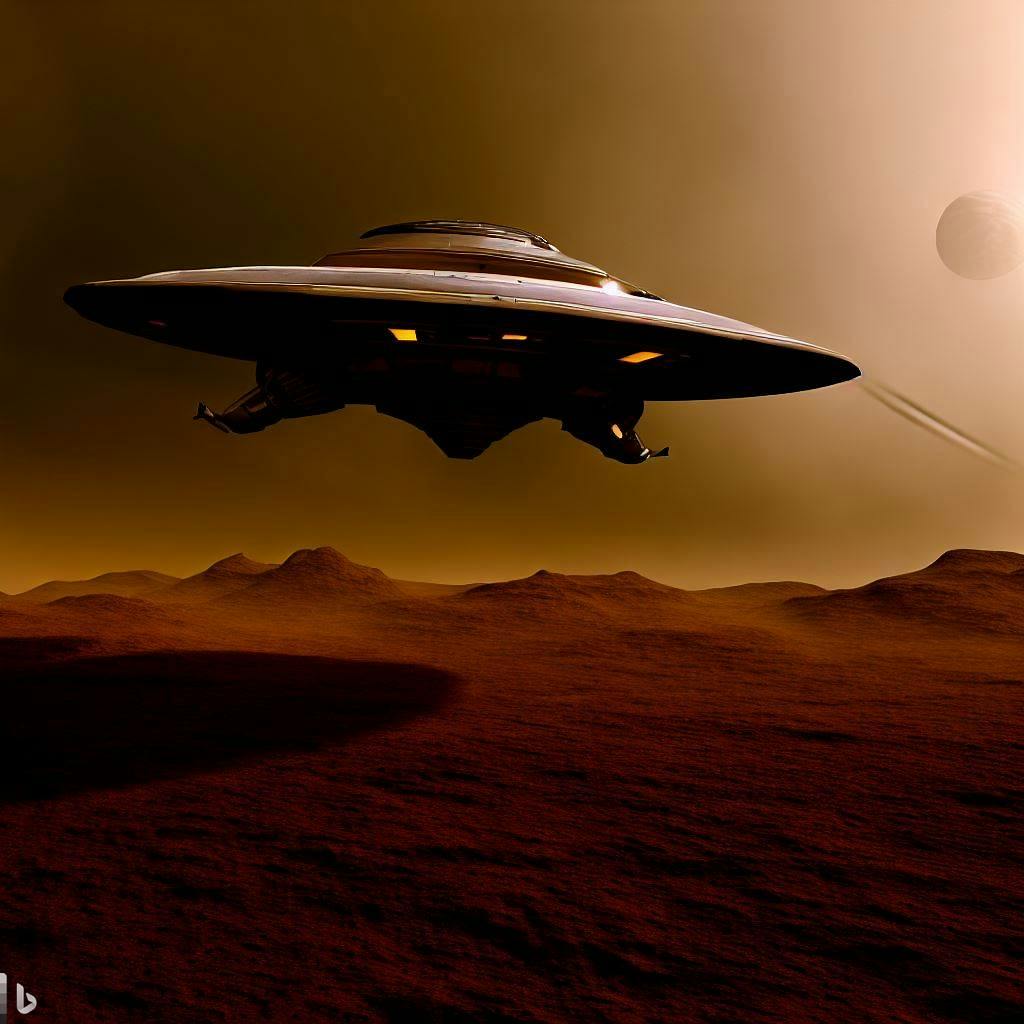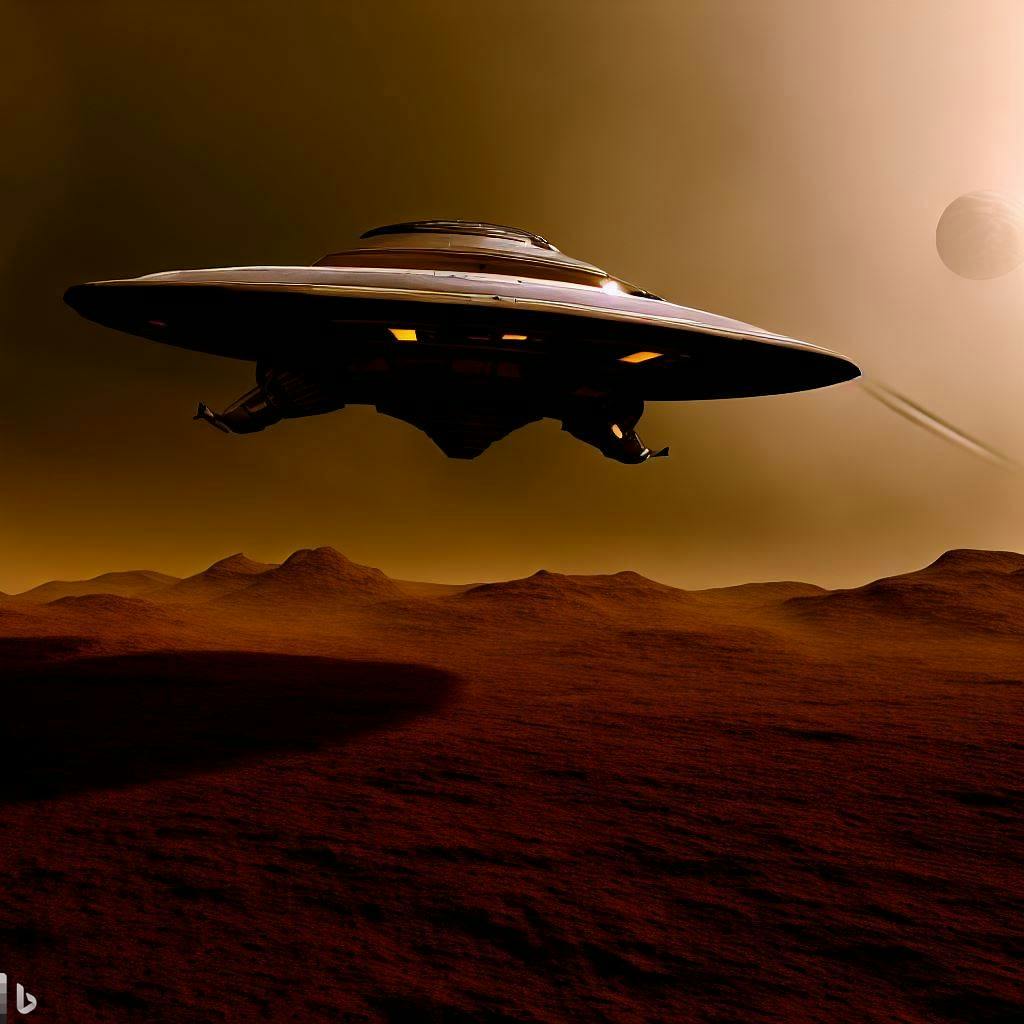Humanity's Encounter with the Elyrians


In the year 2920, humanity had reached the peak of its technological prowess. With colonies on Mars, the Moon, and beyond, the mysteries of the universe were gradually unveiling themselves. Yet, despite all their advancements, one question continued to elude them: were we alone in the cosmos?
It was a warm summer evening when Dr. Elizabeth Clarke, a brilliant astrophysicist, sat hunched over her computer console in the remote research outpost nestled in the Andes Mountains of Chile. She was working the night shift at the South Celestial Observatory, monitoring data from one of the most powerful telescopes ever created. The Celestial Eye, as it was affectionately known, had the capacity to capture and analyze celestial phenomena with unparalleled precision.
As she scanned through the streams of data, her sleep-deprived eyes widened with astonishment. What she had initially assumed to be just another asteroid drifting through space had sparked her curiosity. There was something different about this object. It exhibited an unexplainable acceleration, not characteristic of any known celestial body. The object had veered sharply and was now sailing across the Martian sky at a steady pace.
Her fingers raced across the keyboard to alert her colleagues. It wasn't long before astronomers worldwide were huddled in their observatories, all eyes trained on the same enigmatic object.
Over the course of the next few hours, the object's path became undeniable. It wasn't merely a celestial rock; it was a spaceship, a construct of intelligent design. Panic and excitement rippled through the global scientific community and the world beyond.
Governments scrambled to confirm the authenticity of the data, fearing it might be some elaborate hoax or a sign of impending extraterrestrial invasion. But the evidence was incontrovertible. The spaceship was real, and it was advancing towards Mars.
As it neared the red planet, the world watched in breathless anticipation. It was as if the universe itself was holding its breath, waiting for the next chapter in humanity's story to unfold.
Then, as the spaceship entered Mars' orbit, it performed a remarkable maneuver, slowing down and coming to a graceful halt. Suspended in the Martian sky, it emitted a series of radiant pulses, bathing the surface of the planet in an otherworldly glow. It was a message, a beacon of light, an invitation.
The global community of astronomers and astrophysicists set to work, deciphering the alien signal. Dr. Clarke, having played a crucial role in the detection, was at the forefront of this monumental endeavor.
The message was encoded in a language and mathematical framework entirely foreign to humanity. It took months of tireless effort to break the code, but finally, the message revealed itself:
"We come in peace, seekers of knowledge. We have watched your species for eons, awaiting the day when you would reach out to the stars. We have much to share, and much to learn from one another. Join us on this journey of discovery."
The world held its collective breath once more, this time in awe and hope. Humanity was not alone, and they were being offered an invitation to take their place among the civilizations of the cosmos.
In the years that followed, diplomats, scientists, and astronauts from Earth made their way to Mars, where they were greeted by the enigmatic alien species. The exchange of knowledge, culture, and technology began, opening a new era of cooperation and exploration that would forever change the course of human history.
As the spaceship that had crossed Mars continued its journey through the cosmos, it left behind a legacy of unity and understanding, a testament to the power of curiosity and the unquenchable thirst for knowledge that bound the human spirit to the stars. Humanity's first encounter with extraterrestrial life marked the dawn of a new era, one where the universe beckoned with boundless possibilities.
The alien species that made contact with humanity in the year 2920 were a highly advanced and enigmatic civilization known as the Elyrians. They hailed from a distant star system, light-years away from Earth, and had been observing our planet for centuries, patiently waiting for the moment when humanity would be ready to join the interstellar community.
Here are some key characteristics and details about the Elyrians:
1. Physical Appearance: Elyrians were humanoid in shape, with a graceful and slender build. They stood slightly taller than the average human, with elongated limbs and fingers. Their skin had a bluish-gray hue, and they had large, expressive eyes that were adapted to the lower light conditions of their home planet. Their faces were characterized by subtle, elegant features.
2. Technology: The Elyrians were masters of advanced technology, far beyond anything that humanity had ever encountered. Their spaceships were sleek and graceful, capable of interstellar travel at incredible speeds. They had harnessed clean and nearly limitless energy sources, enabling them to power their society without causing harm to their environment.
3. Culture: Elyrian society was based on principles of cooperation, knowledge-sharing, and sustainability. They had long since overcome conflicts and wars, focusing instead on the pursuit of scientific discovery, art, and the preservation of their natural world. Their culture was characterized by a deep reverence for the cosmos and a profound sense of wonder.
4. Communication: Elyrians communicated primarily through a form of telepathy, allowing them to share thoughts and ideas with incredible clarity and precision. However, they had developed a universal translator technology that enabled them to communicate with other species, including humans, using spoken language.
5. Knowledge and Wisdom: The Elyrians possessed a vast repository of knowledge about the universe, including advanced sciences, medicine, and a deep understanding of the cosmos. They were eager to share their wisdom with humanity and help us advance our own understanding of the universe.
6. Intergalactic Diplomacy: The Elyrians were part of a larger interstellar alliance of civilizations, united by their commitment to peace, exploration, and cooperation. They had previously made contact with several other species, and their interactions had been characterized by mutual respect and collaboration.
7. Environmental Stewards: One of the most impressive aspects of Elyrian society was their commitment to environmental stewardship. They had achieved a harmonious balance with their home planet and were dedicated to preserving the natural world. This philosophy deeply resonated with Earth's environmentalists, leading to a strong bond between the two species.
The arrival of the Elyrians marked a turning point in human history. Their knowledge and technology propelled humanity into a new era of scientific discovery and cooperation. Together, humans and Elyrians embarked on joint ventures to explore the cosmos, solve some of the most pressing global challenges, and share the wonders of their respective cultures.
As the exchange of ideas and knowledge continued, it became clear that the Elyrians had much to offer, but they were equally interested in what Earth and humanity had to contribute to the greater tapestry of the universe. The partnership between humans and Elyrians exemplified the best aspects of interstellar diplomacy, forging a lasting bond of friendship and collaboration between two species from different corners of the cosmos.
